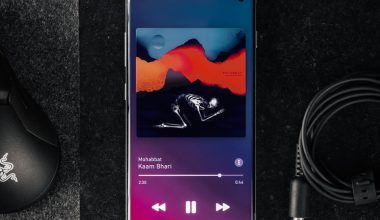The guitar is one of the most beloved and versatile instruments worldwide. But did you know there are many guitar-like instruments that share similarities in design, sound, or playing technique? If you’re curious about exploring alternatives to the traditional guitar, you’ve come to the right place.
This guide will delve into various instruments similar to the guitar, their unique features, and why they might be a perfect addition to your musical journey. Whether you’re a seasoned guitarist or just starting, these instruments offer new opportunities for creativity and expression.
What Are Guitar-Like Instruments?
Guitar-like instruments are those that resemble the guitar in structure, string arrangement, or playing style. They may include stringed instruments with frets, a neck, and a body designed to produce resonant sounds.
These instruments vary widely in size, tuning, and tone, making them ideal for different genres and preferences.
Why Explore Guitar-Like Instruments?
Expanding your musical repertoire with guitar-like instruments can:
- Enhance creativity: Discover unique sounds and playing techniques.
- Challenge your skills: Push beyond the traditional guitar’s boundaries.
- Diversify your style: Adapt to various musical genres.
- Deepen cultural appreciation: Many guitar-like instruments have rich cultural histories.
By learning about these instruments, you’ll gain a broader understanding of stringed music and its global variations.
Popular Guitar-Like Instruments
Let’s explore some of the most fascinating guitar-like instruments and what makes them unique.
1. Ukulele
The ukulele is a small, guitar-like instrument with a cheerful sound.
- Key Features:
- Four nylon strings.
- Lightweight and portable.
- Tuned differently from a guitar (G-C-E-A).
- Best For:
- Beginners, due to its simple chords and easy playability.
- Genres like Hawaiian music, pop, and folk.
If you’re looking for a fun and approachable instrument, the ukulele is a great choice.
2. Mandolin
The mandolin is a stringed instrument known for its bright, twangy sound.
- Key Features:
- Eight strings, paired in four courses.
- Played with a pick.
- Frequently used in bluegrass, folk, and classical music.
- Best For:
- Players interested in intricate melodies and fast-paced strumming.
The mandolin’s unique tone and rich history make it a fascinating guitar-like instrument to explore.
3. Banjo
The banjo is a quintessential American instrument with a distinctive sound.
- Key Features:
- Typically four or five strings.
- Resonant drum-like body.
- Often played with fingerpicks or clawhammer technique.
- Best For:
- Bluegrass, country, and folk music enthusiasts.
Learning the banjo adds a lively, rhythmic element to your musical arsenal.
4. Bouzouki
The bouzouki is a traditional Greek instrument that shares similarities with the guitar.
- Key Features:
- Long neck and eight strings in four courses.
- Produces a metallic, resonant tone.
- Often used in Greek and Irish folk music.
- Best For:
- Those looking to explore world music traditions.
The bouzouki’s exotic sound will transport you to faraway lands with its rich cultural heritage.
5. Charango
The charango is a small Andean instrument with a bright, sweet tone.
- Key Features:
- Ten strings arranged in five courses.
- Traditionally made with an armadillo shell (modern versions use wood).
- Tuned higher than a guitar.
- Best For:
- Musicians interested in South American folk music.
This guitar-like instrument offers a unique playing experience and cultural significance.
6. Baritone Guitar
A baritone guitar is a larger, deeper-tuned version of the standard guitar.
- Key Features:
- Longer scale length for lower tuning.
- Six strings, similar to a guitar.
- Ideal for creating darker, fuller tones.
- Best For:
- Rock, jazz, and experimental music.
The baritone guitar is a great choice for those seeking a fresh sonic palette.
How to Choose the Right Guitar-Like Instrument
With so many options, how do you decide which guitar-like instrument to try? Consider these factors:
1. Musical Preferences
What genres do you enjoy? If you love bluegrass, the banjo might be perfect. For folk music, consider the mandolin or bouzouki.
2. Skill Level
Some instruments, like the ukulele, are beginner-friendly, while others, like the charango, may require more practice.
3. Budget
Affordable options include the ukulele and recorder, while instruments like the bouzouki may require a higher investment.
4. Portability
If you’re always on the move, compact instruments like the ukulele or mandolin are ideal.
Learning to Play Guitar-Like Instruments
Once you’ve chosen an instrument, follow these tips to get started:
- Start with basics: Learn how to hold and tune your instrument.
- Practice chords: Focus on simple chords and strumming patterns.
- Use online tutorials: Many free resources are available for beginners.
- Join a community: Connect with other players for tips and support.
Benefits of Exploring Guitar-Like Instruments
Diving into the world of guitar-like instruments offers several advantages:
- Broader skill set: Develop techniques that transfer across instruments.
- Unique sound: Add distinct tones and textures to your music.
- Cultural exploration: Gain insight into different musical traditions.
Conclusion:
Exploring guitar-like instruments opens up a world of creative possibilities. Whether you’re drawn to the cheerful ukulele, the intricate mandolin, or the rhythmic banjo, these instruments offer something unique for every musician.
Take the leap and try one today. You may discover a new passion or sound that elevates your musical journey to new heights.
Related Articles:
For further reading, explore these related articles:
- Mini Musical Instruments: A Comprehensive Guide to Tiny Tunes
- Discover the Best Cheap Musical Instruments for Beginners
- Top Instruments to Learn: A Friendly Guide for Everyone
For additional resources on music marketing and distribution, visit Deliver My Tune.






